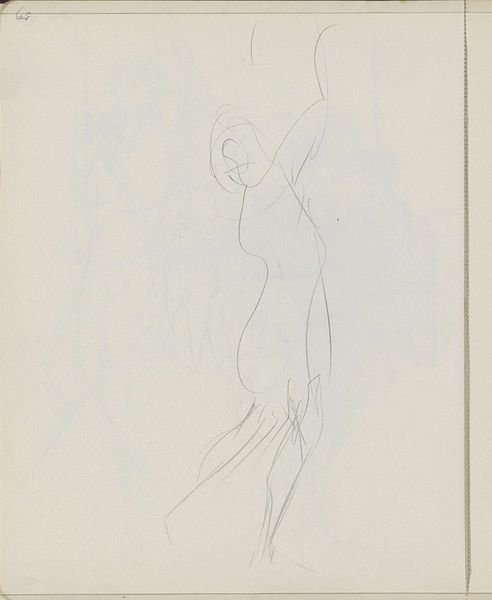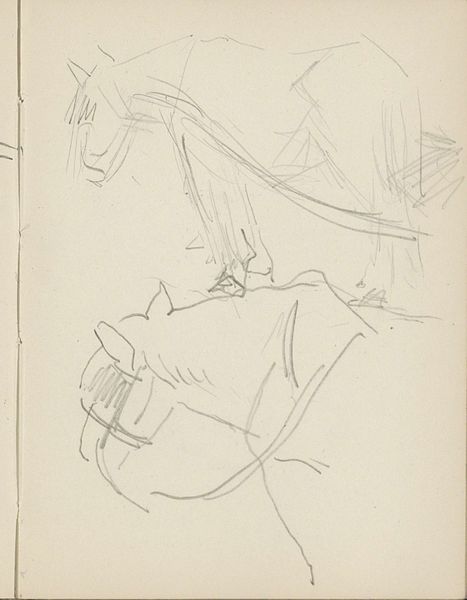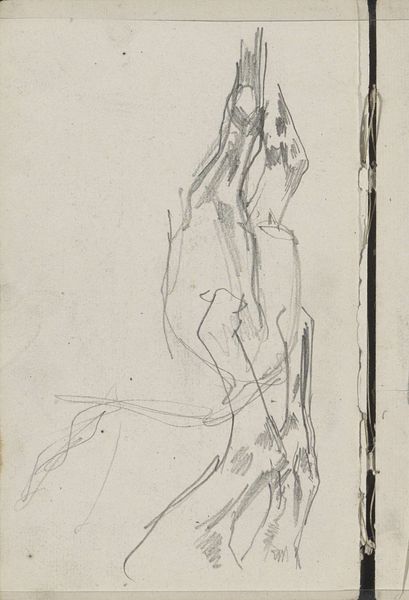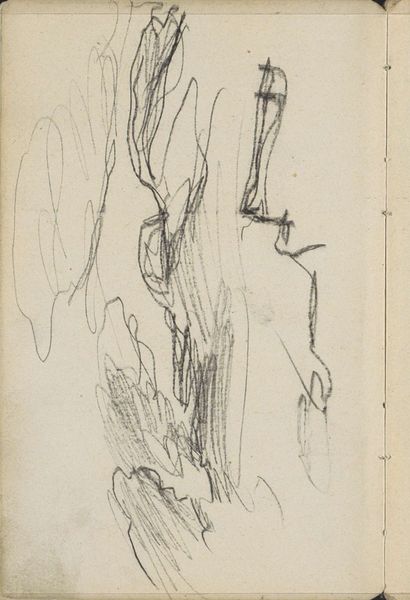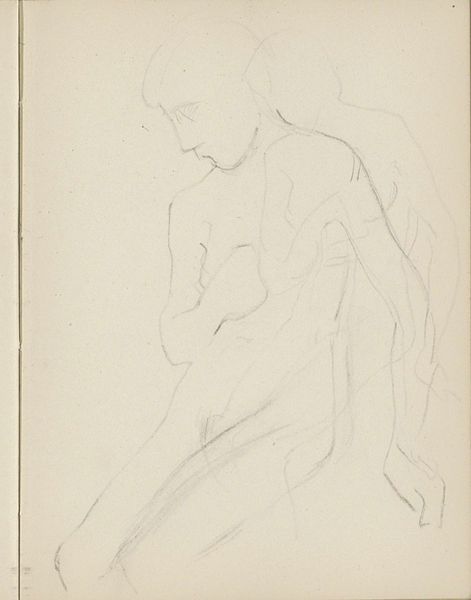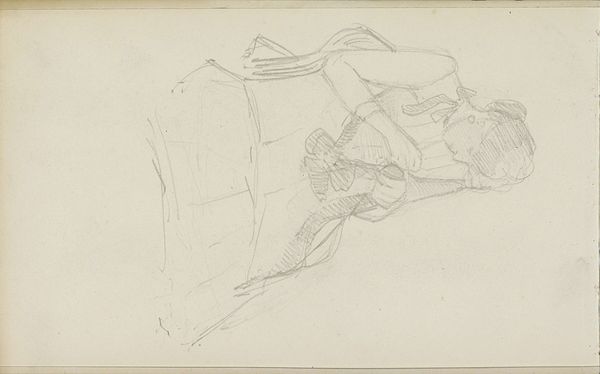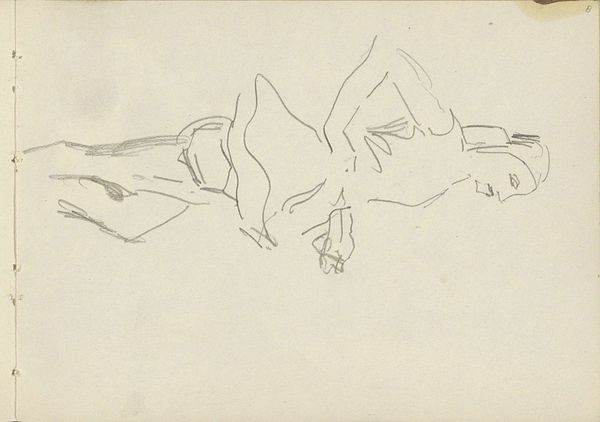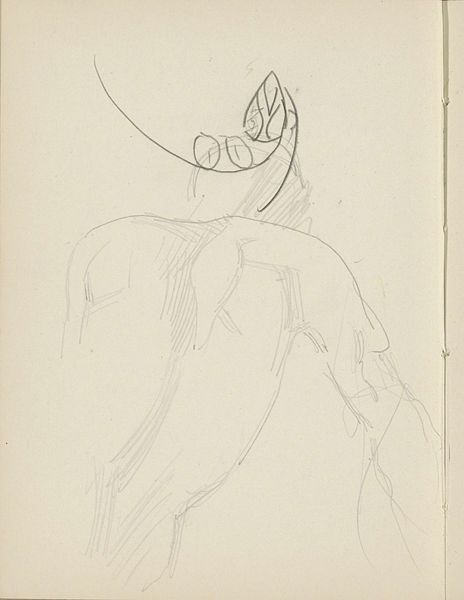
drawing, paper, pencil
#
portrait
#
drawing
#
pencil sketch
#
figuration
#
paper
#
pencil
#
sketchbook drawing
#
pencil work
#
academic-art
Copyright: Rijks Museum: Open Domain
Editor: This is "Naakte man, knielend op één knie," or "Naked Man, Kneeling on One Knee," a pencil drawing on paper by Reijer Stolk, sometime between 1906 and 1945. It feels very raw and immediate, almost like a study. I’m struck by the visible process, the layering of lines creating form. What draws your eye when you look at it? Curator: The directness of the pencil work, definitely. Look at the evident hand of the artist – the varying pressure, the visible construction of the figure. The material realities are laid bare: paper, pencil, the labor of creating form from essentially nothing. Editor: It does feel like we're seeing the act of creation itself. Curator: Exactly. And that links it to broader issues. Consider the availability of materials like pencils and paper in the early 20th century, the accessibility of artistic training – these determined who could even produce such a sketch. Stolk isn’t presenting us with a finished masterpiece but with the tangible record of artistic labor, the foundation of image-making. Editor: So you're saying the medium and the process become the message in a way? Curator: Absolutely. It challenges that hierarchy of finished versus unfinished, questioning what we value in art. Why is a polished painting seen as inherently more worthy of attention than a simple, honest drawing like this? Editor: I see what you mean. I was so focused on the figure itself, but now I'm thinking about how this drawing democratizes artmaking by showing its foundational elements. It is interesting to consider who could produce these types of drawings, and who could not, at that time. Curator: Precisely. Editor: Thanks, that has broadened my view a lot. It makes me think differently about what constitutes art and the conditions of its making.
Comments
No comments
Be the first to comment and join the conversation on the ultimate creative platform.




